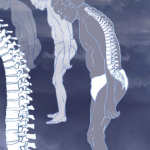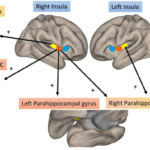 ACR CONVERGENCE 2021—To help the clinical assessment of disease activity in patients with axial spondyloarthritis (axSpA) and psoriatic arthritis (PsA), rheumatologists can turn to evidence-based measures commonly used in research that focus on both quality and treat-to-target concepts of disease management. During a session titled Assess Disease Activity in axSpA & PsA in Clinical Practice, two experts described these disease activity measurements used in axSpA and PsA and how rheumatologists can apply these measures in the clinic.
ACR CONVERGENCE 2021—To help the clinical assessment of disease activity in patients with axial spondyloarthritis (axSpA) and psoriatic arthritis (PsA), rheumatologists can turn to evidence-based measures commonly used in research that focus on both quality and treat-to-target concepts of disease management. During a session titled Assess Disease Activity in axSpA & PsA in Clinical Practice, two experts described these disease activity measurements used in axSpA and PsA and how rheumatologists can apply these measures in the clinic.
Alexis Ogdie, MD, associate professor of medicine at the Hospital of the University of Pennsylvania, Philadelphia, opened the session, emphasizing the importance of measuring objective disease activity in PsA and using these measures to develop treat-to-target strategies and monitor outcomes and goals.
Objective measures of disease activity include both the physical exam and patient reported outcomes, such as the Routine Assessment of Patient Index Data 3 (RAPID3), which is commonly used in the U.S., and the Psoriatic Arthritis Impact of Disease (PsAID) Questionnaire, which is specific for PsA and commonly used in Europe.
‘A thorough assessment is how we know how our patients are doing. If we only ask them or only look at a couple of joints, we’re missing the bigger picture.’ —Dr. Ogdie
After the initial comprehensive exam, Dr. Ogdie said assessment of disease activity should be done on follow-up visits, including the assessment of active skin disease, disease impact, side effects and patient reported outcomes. She discussed various aspects of the physical exam (e.g., 66/68 joint count, use of the Spondyloarthritis Research Consortium of Canada [SPARCC] enthesitis score vs. Leeds Enthesitis Index [LEI], and dactylitis exam) that can be used, underscoring the need to include assessment of the skin and nails, which is relatively easy, but often not done by rheumatologists, she said.
Unlike in Europe, Dr. Ogdie said rheumatologists in the U.S. don’t document disease activity as often and suggested this lack of documentation can be a deficit to care because documentation can help define treat-to-target goals and facilitate insurance approvals for treatment. Although many rheumatologists think these physical exams require too much time, she noted how quickly they can be done—four minutes and a bit longer for recording.
“A thorough assessment is how we know how our patients are doing,” she said. “If we only ask them or only look at a couple of joints, we’re missing the bigger picture, which is really needed to optimize treatment.”
Measurements from both the physical exam and patient-reported outcomes can be combined to develop a treat-to-target plan the rheumatologist and patient can assess at each clinical visit to determine if the therapy is working or if changes are needed, as well as whether other areas affecting the patient’s disease and outcomes can be improved.
Dr. Ogdie provided rheumatologists with several resources to help capture patient assessments, such as an app from the Group for Research and Assessment of Psoriasis and Psoriatic Arthritis (GRAPPA) and Arthritis Power. She also provided links to downloadable resources from the Psoriasis & Psoriatic Arthritis Clinics Multicenter Advancement Network (PPACMAN).
axSpA Disease Activity
In discussing disease activity assessment for axSpA, Pedro M. Machado, MD, PhD, Centre for Rheumatology and Department of Neuromuscular Diseases, University College, London, underscored that axSpA is a multidimensional disease in which patients with the same disease may present in different ways and the disease may change in the same patient over time. Therefore, patient assessment is multidimensional and includes measurements of quality of life, physical function, spinal mobility, structural damage and axial inflammation, as well as disease activity.
Dr. Machado focused on the different ways to measure disease activity and response to therapy using either a variety of single measures/instruments (e.g., spinal pain, nocturnal pain, spinal stiffness, swollen/tender joints, patient/physician global scores, enthesitis assessment) or composite indices/instruments (e.g., Bath Ankylosing Spondylitis Disease Activity Index [BASDAI], the Ankylosing Spondylitis Disease Activity Score [ASDAS], ASDAS cut-offs for status and response, Assessment of SpondyloArthritis International Society [ASAS] partial remission and ASAS response criteria).
Although each type of instrument—single or composite—has its benefits, Dr. Machado said the composite indices may provide a better picture of the overall disease state and have enhanced psychometric properties. However, single measures may be appropriate for judging a specific outcome, he said. He cited the example of an intervention that is directed primarily at one construct and not aimed at producing a global change. Moreover, he said parsimony in outcome assessment can sometimes unintentionally lead to loss of subtlety and information rather than a benefit for patients in clinical practice.
Although Dr. Machado said the BASDAI is the most widely used composite instrument for axSpA, he noted its limitations, such as measuring only part of disease activity, lack of specificity for inflammatory processes and failing to take into account the relative importance of individual clinical manifestations and any redundancies.
In response to these limitations, the ASDAS-CRP and ASDAS-ESR composite instruments were created and offer two formulas—a preferred, with C-reactive protein (CRP), and alternative, with erythrocyte sedimentation rate (ESR)—to score disease activity, with cutoffs for disease activity states, representing the status of disease, and cutoffs for change scores, representing response levels to treatment.
Mary Beth Nierengarten is a freelance medical journalist based in Minneapolis.





